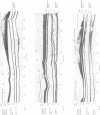Abstract
In 27 rhesus monkeys the cerebrospinal fluid pressure (CSFP) was raised by injections into the cisterna magna to about 40 to 50 mm Hg in steps of 5 mm Hg every five minutes. During the initial phase of the rise of the CSFP to about 15 mm Hg normal animals showed a significant fall in the systolic arterial blood pressure. With a further elevation of the CSFP the BP rose till the CSFP reached 30 to 40 mm Hg. If the CSFP were raised higher than that, a large number of the animals showed a significant fall in the BP. In animals which were shocked before the CSFP was raised there was no drop in the systolic BP during the initial phase. This study indicates that vascular decompensation occurs in the majority of animals when the CSFP goes higher than 30 to 40 mm Hg; there is a significant rise in the pulse rate, superior sagittal sinus pressure (SSP), and internal jugular vein pressure (JVP). The JVP was related to the SSP, indicating that the JVP most probably reflected the pressure changes in the intracranial venous sinuses. Four animals suddenly collapsed at the highest CSFP. In the remaining 23 animals, on a sudden lowering of the CSFP to zero from the highest level, 13 monkeys died in less than half an hour and four in about an hour, while six animals stood this elevation of the CSFP well, with a good recovery. This indicates that, once the vascular decompensation has set in, the prognosis is generally poor even after lowering the CSFP to normal. The drop of the CSFP to zero produced no significant change in the pulse rate but a significant fall in the BP. The SSP rose when its pre-lowering level was less than 7·5 mm Hg and fell when the level was at or above 7·5 mm Hg level. The JVP showed a significant correlation with the variations in the SSP. The fundus examination at the end of the experiment revealed no abnormality.
Full text
PDF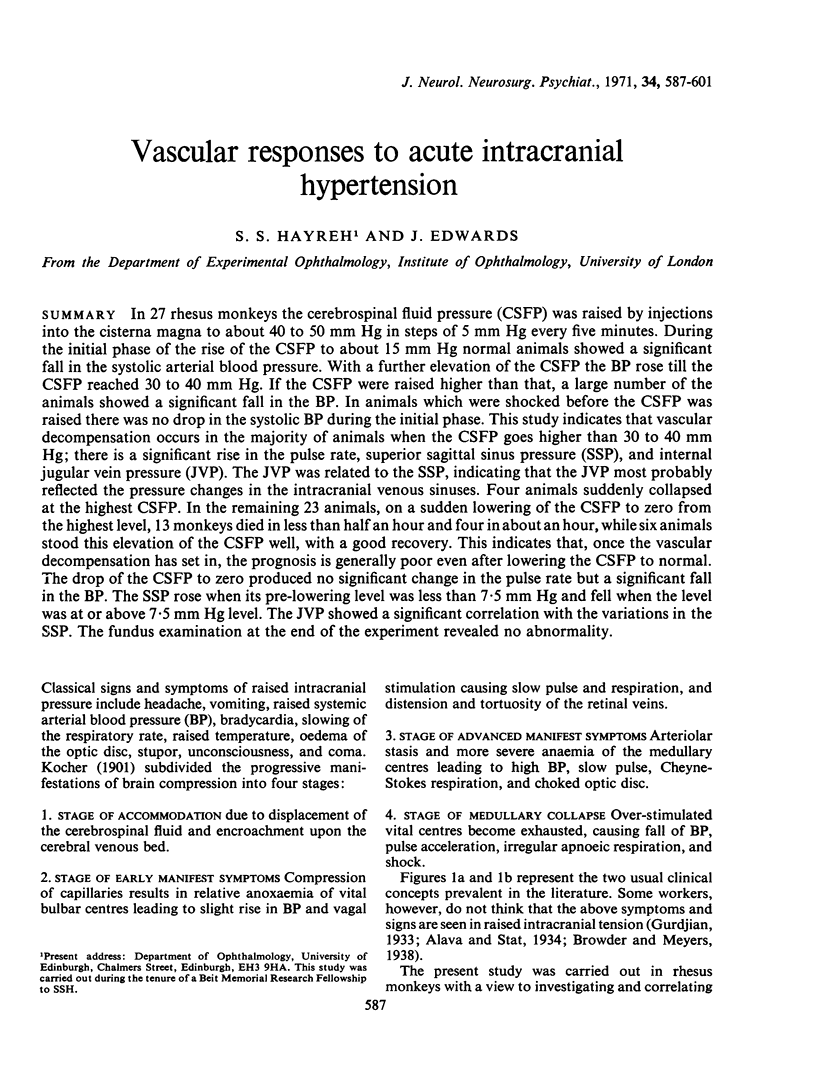
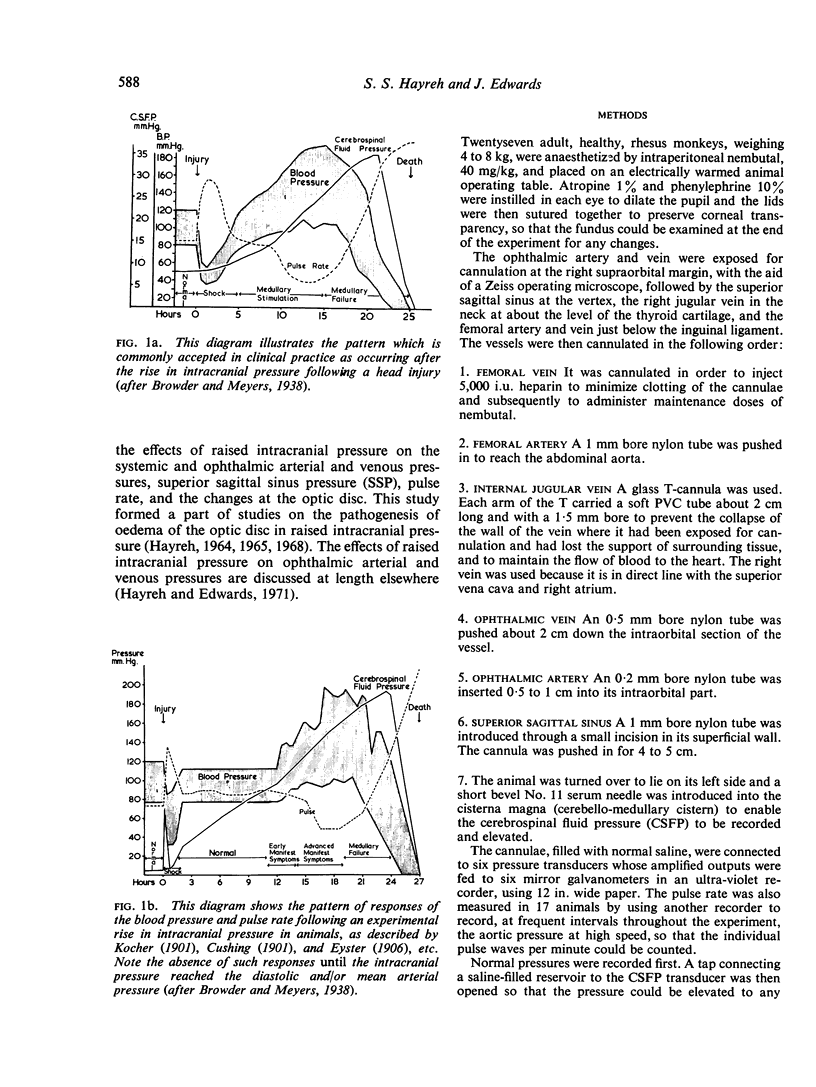
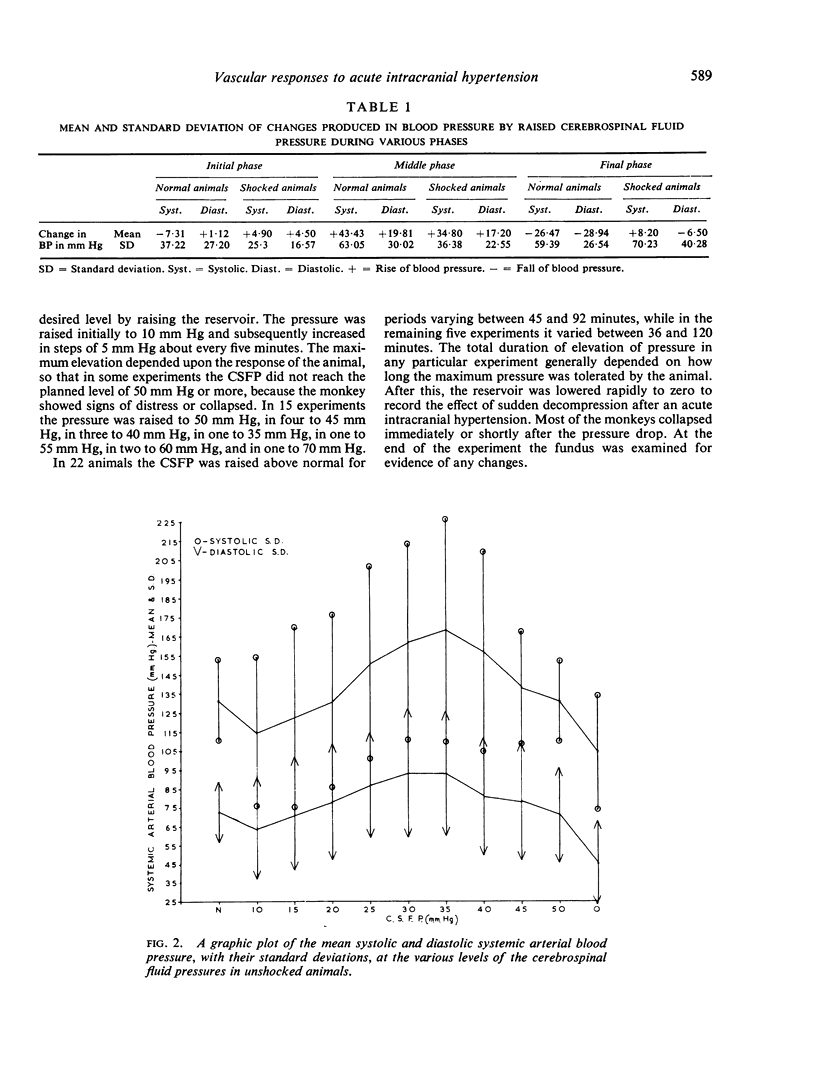

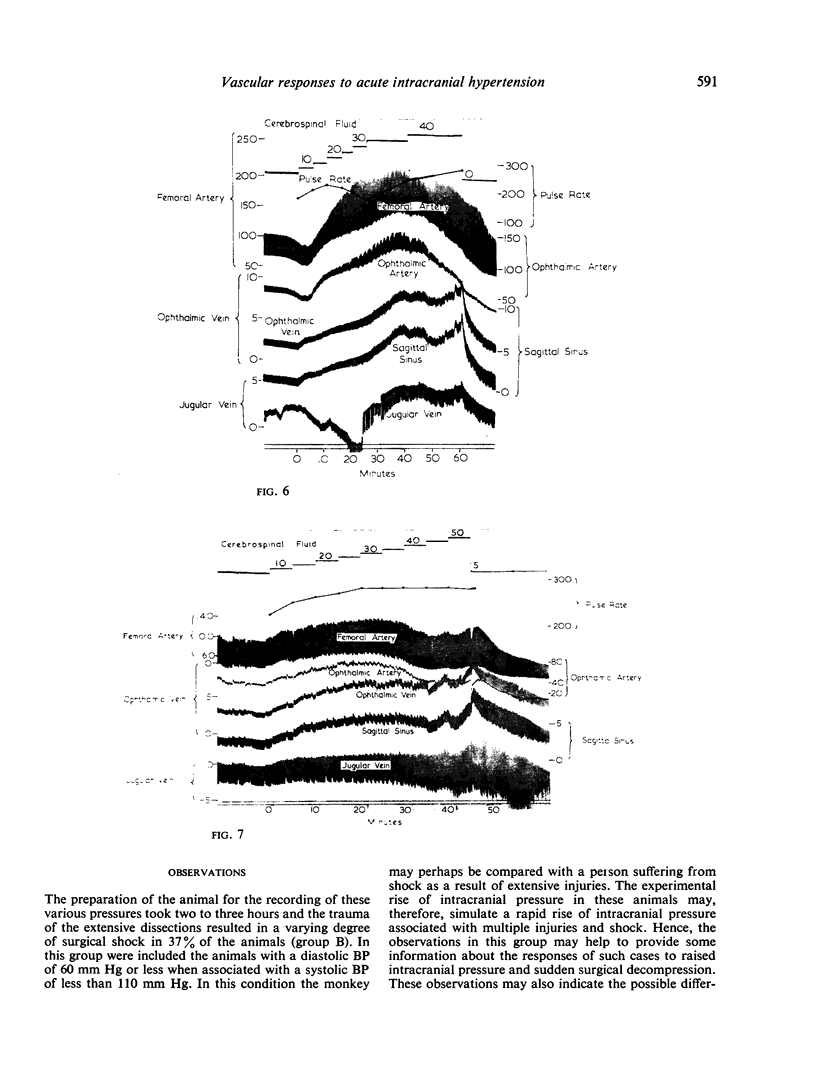
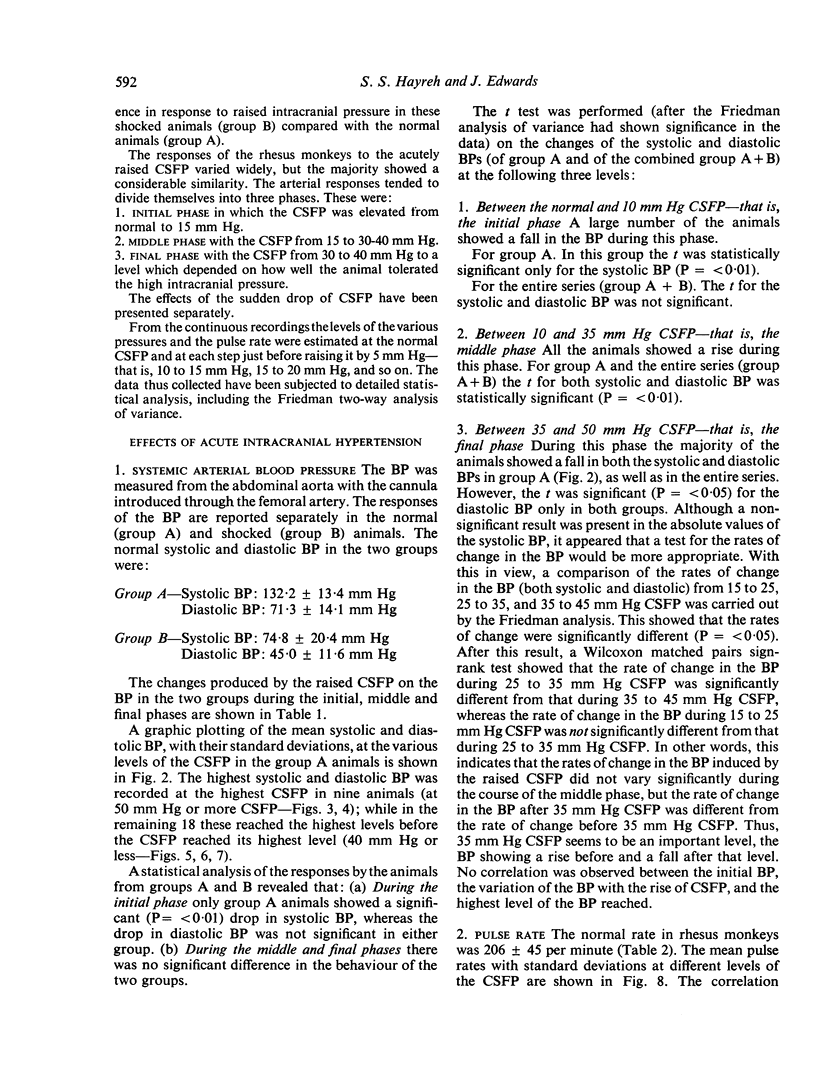
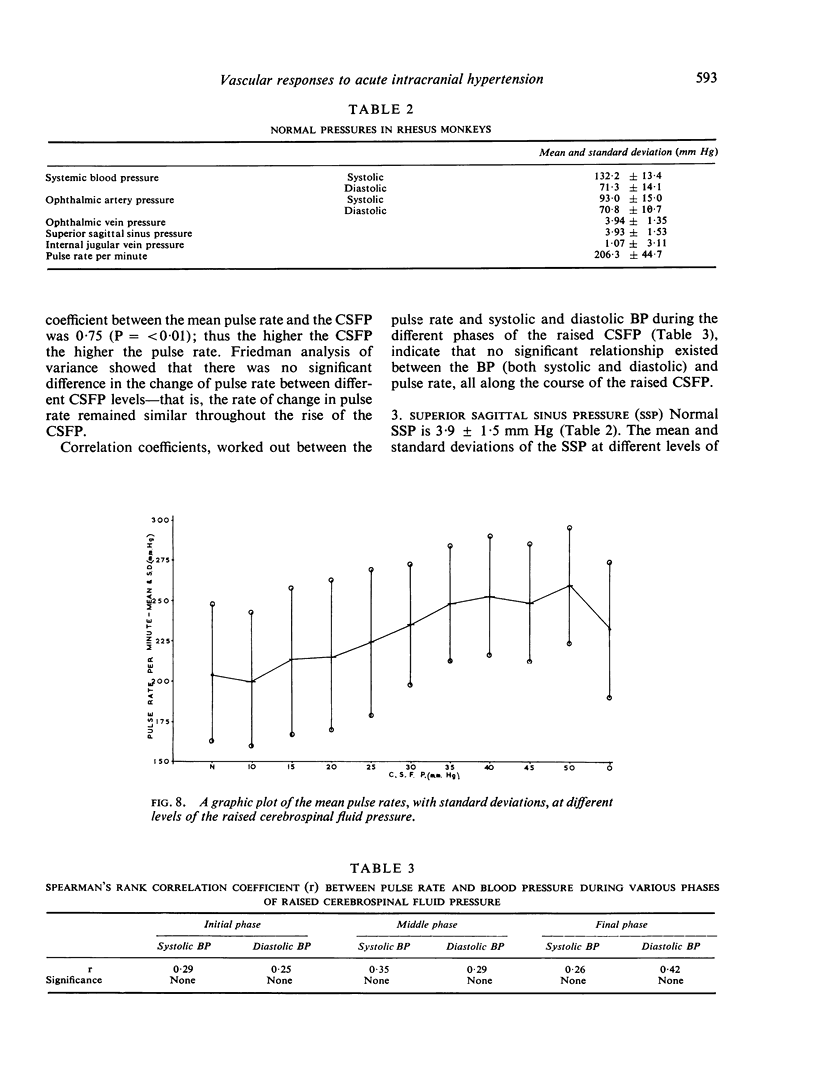
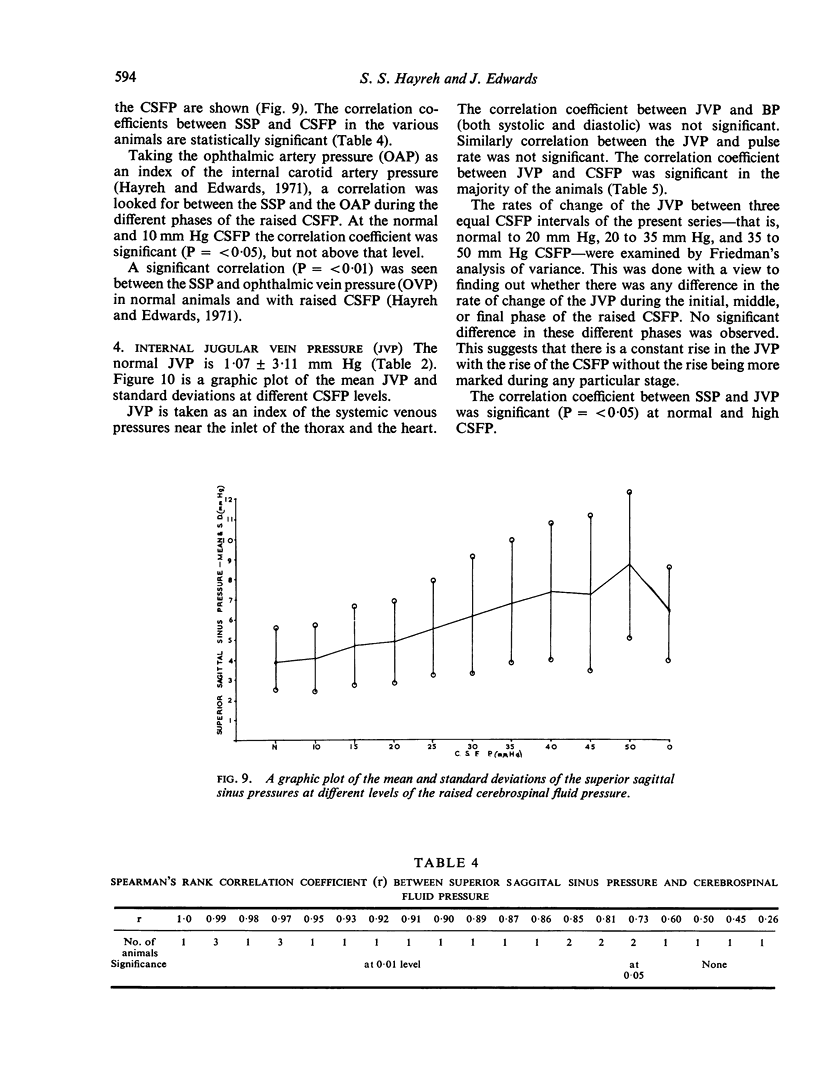
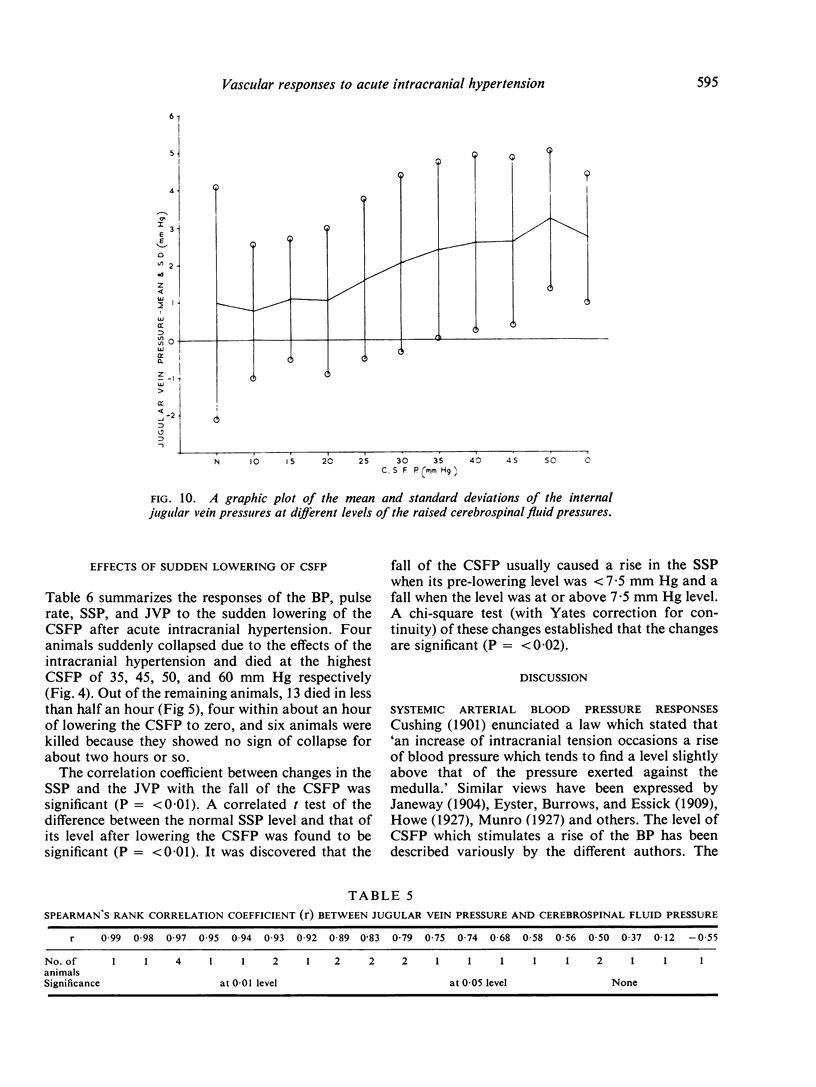

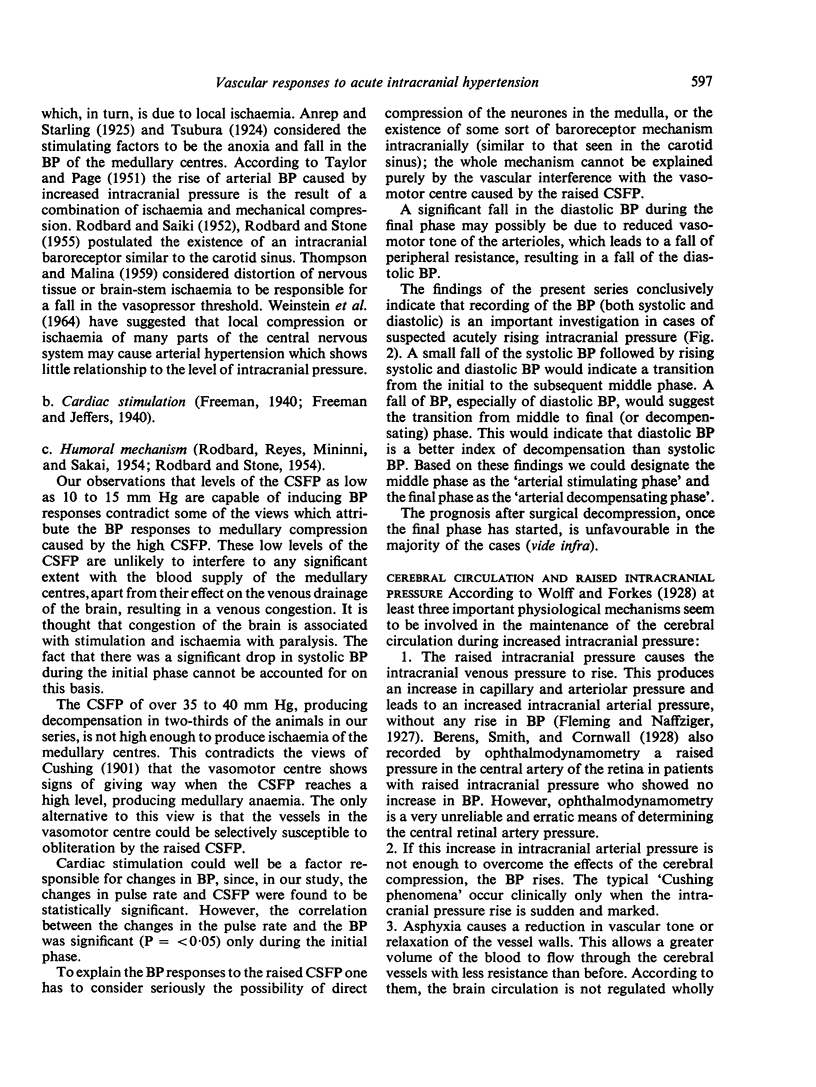
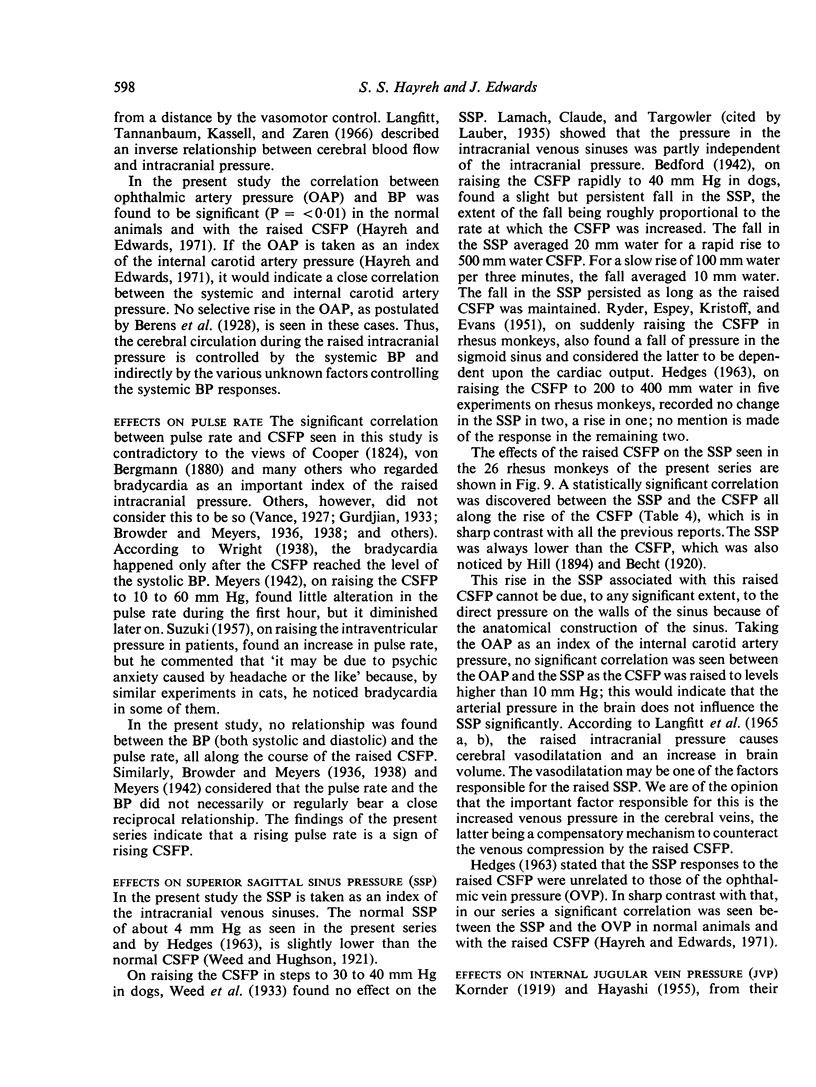
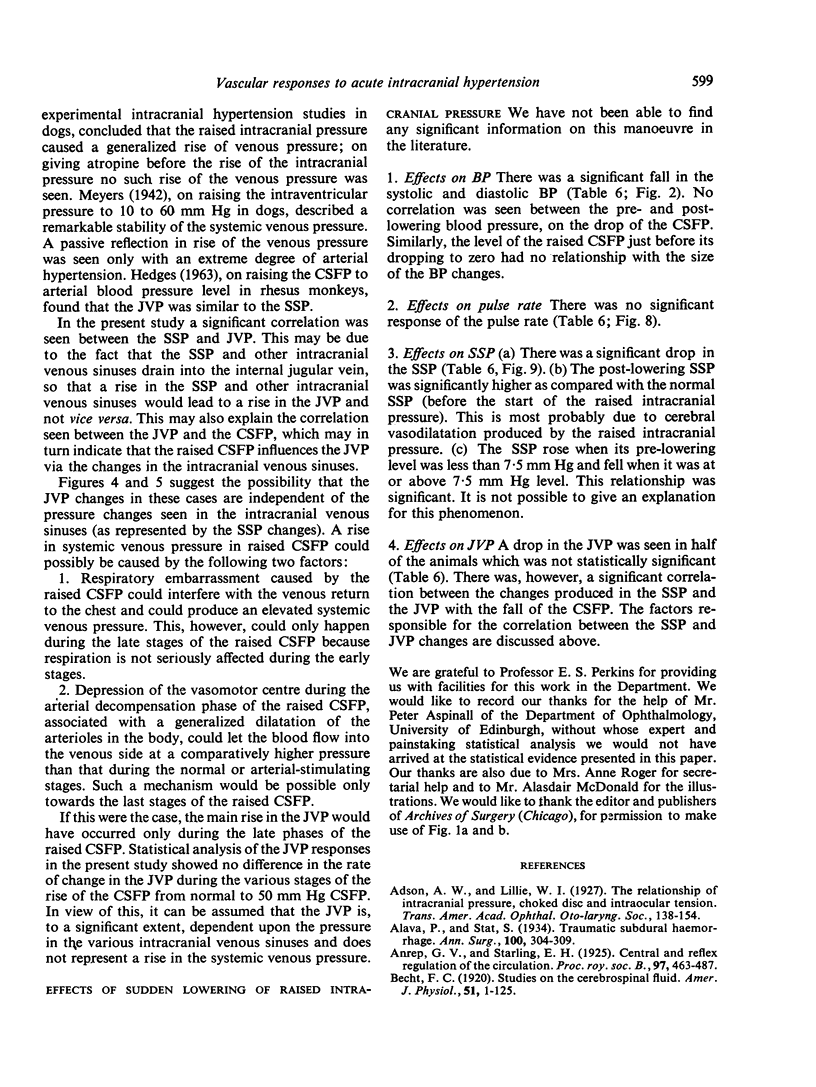
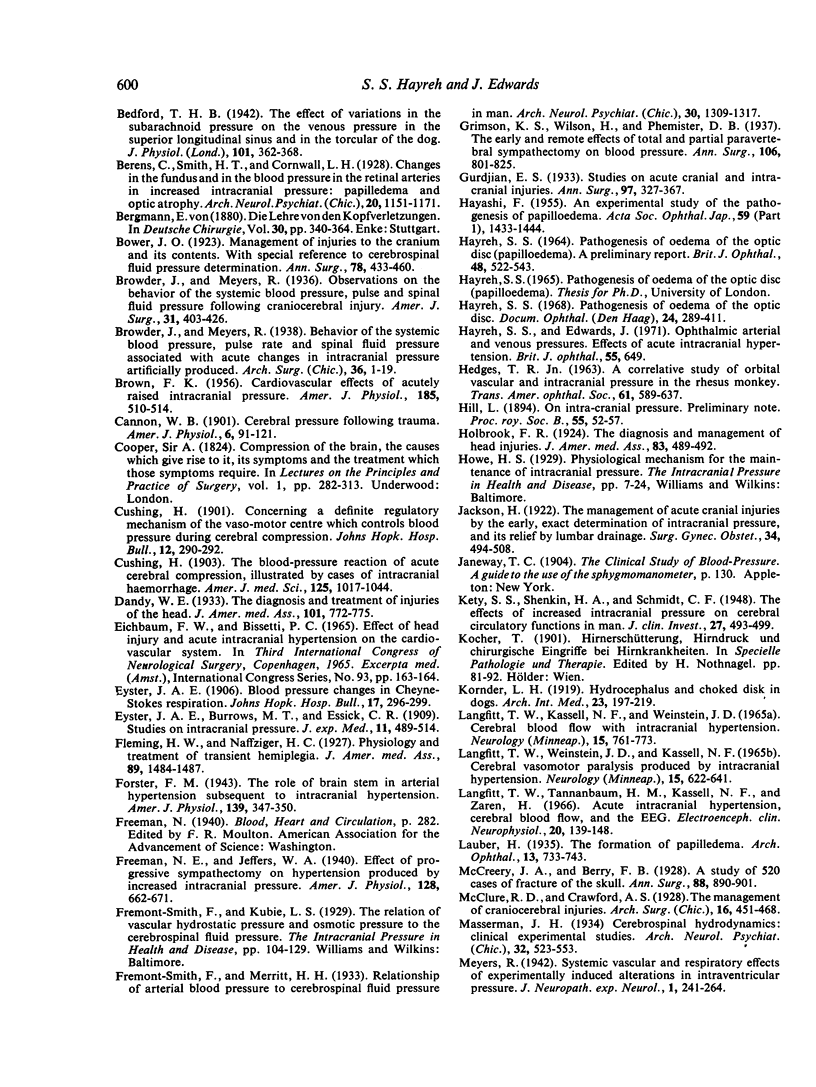
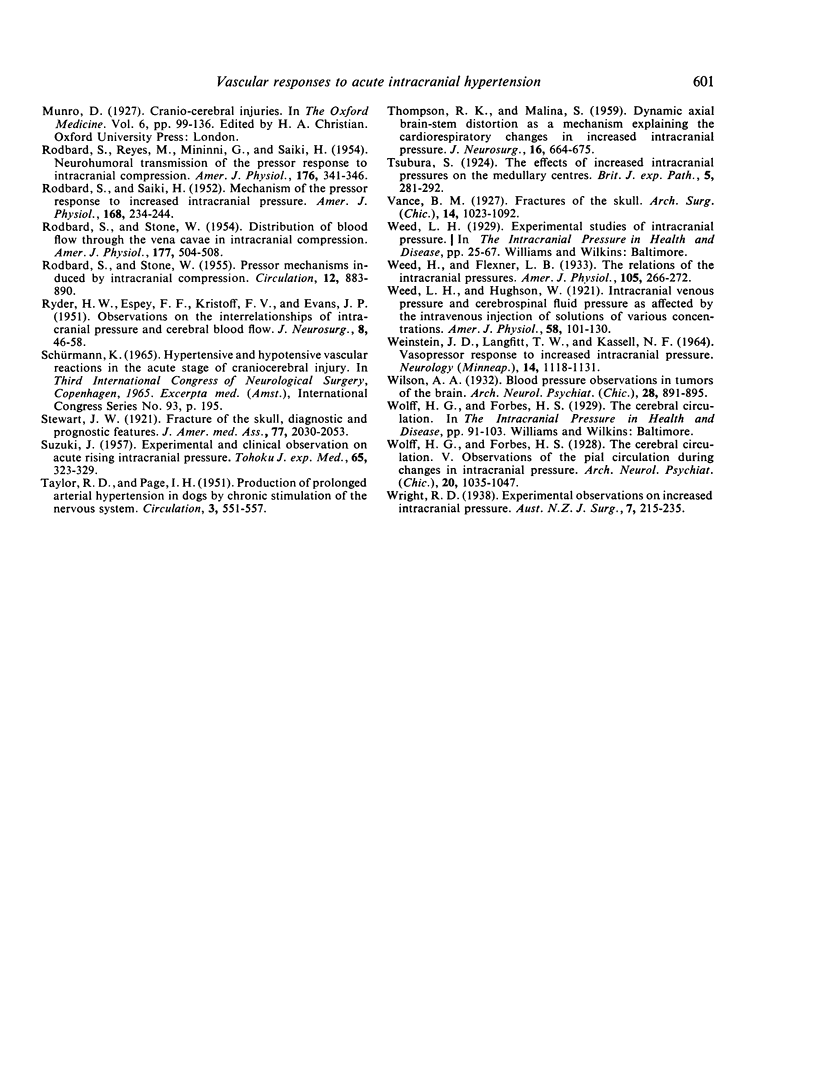
Images in this article
Selected References
These references are in PubMed. This may not be the complete list of references from this article.
- Alava P., Stat S. Traumatic Subdural Haemorrhage: Surgical Removal of Clot; Recovery. Ann Surg. 1934 Aug;100(2):304–309. doi: 10.1097/00000658-193408000-00005. [DOI] [PMC free article] [PubMed] [Google Scholar]
- BROWN F. K. Cardiovascular effects of acutely raised intracranial pressure. Am J Physiol. 1956 Jun;185(3):510–514. doi: 10.1152/ajplegacy.1956.185.3.510. [DOI] [PubMed] [Google Scholar]
- Bedford T. H. The effect of variations in the subarachnoid pressure on the venous pressure in the superior longitudinal sinus and in the torcular of the dog. J Physiol. 1942 Nov 30;101(3):362–368. doi: 10.1113/jphysiol.1942.sp003991. [DOI] [PMC free article] [PubMed] [Google Scholar]
- Bower J. O. MANAGEMENT OF INJURIES TO THE CRANIUM AND ITS CONTENTS: WITH SPECIAL REFERENCE TO CEREBROSPINAL FLUID PRESSURE DETERMINATIONS. Ann Surg. 1923 Oct;78(4):433–460. doi: 10.1097/00000658-192310000-00001. [DOI] [PMC free article] [PubMed] [Google Scholar]
- Grimson K. S., Wilson H., Phemister D. B. THE EARLY AND REMOTE EFFECTS OF TOTAL AND PARTIAL PARAVERTEBRAL SYMPATHECTOMY ON BLOOD PRESSURE: AN EXPERIMENTAL STUDY. Ann Surg. 1937 Nov;106(5):801–825. doi: 10.1097/00000658-193711000-00001. [DOI] [PMC free article] [PubMed] [Google Scholar]
- Gurdjian E. S. Studies on Acute Cranial and Intracranial Injuries. Ann Surg. 1933 Mar;97(3):327–367. doi: 10.1097/00000658-193303000-00002. [DOI] [PMC free article] [PubMed] [Google Scholar]
- HAYREH S. S. PATHOGENESIS OF OEDEMA OF THE OPTIC DISC (PAPILLOEDEMA). A PRELIMINARY REPORT. Br J Ophthalmol. 1964 Oct;48:522–543. doi: 10.1136/bjo.48.10.522. [DOI] [PMC free article] [PubMed] [Google Scholar]
- Hayreh S. S., Edwards J. Ophthalmic arterial and venous pressures. Effects of acute intracranial hypertension. Br J Ophthalmol. 1971 Oct;55(10):649–663. doi: 10.1136/bjo.55.10.649. [DOI] [PMC free article] [PubMed] [Google Scholar]
- Hayreh S. S. Pathogenesis of oedema of the optic disc. Doc Ophthalmol. 1968;24(2):289–411. doi: 10.1007/BF02550944. [DOI] [PubMed] [Google Scholar]
- Hedges T. R. A Correlative Study of Orbital Vascular and Intracranial Pressure in the Rhesus Monkey. Trans Am Ophthalmol Soc. 1963;61:589–637. [PMC free article] [PubMed] [Google Scholar]
- Kety S. S., Shenkin H. A., Schmidt C. F. THE EFFECTS OF INCREASED INTRACRANIAL PRESSURE ON CEREBRAL CIRCULATORY FUNCTIONS IN MAN. J Clin Invest. 1948 Jul;27(4):493–499. doi: 10.1172/JCI101996. [DOI] [PMC free article] [PubMed] [Google Scholar]
- LANGFITT T. W., KASSELL N. F., WEINSTEIN J. D. CEREBRAL BLOOD FLOW WITH INTRACRANIAL HYPERTENSION. Neurology. 1965 Aug;15:761–773. doi: 10.1212/wnl.15.8.761. [DOI] [PubMed] [Google Scholar]
- LANGFITT T. W., WEINSTEIN J. D., KASSELL N. F. CEREBRAL VASOMOTOR PARALYSIS PRODUCED BY INTRACRANIAL HYPERTENSION. Neurology. 1965 Jul;15:622–641. doi: 10.1212/wnl.15.7.622. [DOI] [PubMed] [Google Scholar]
- Langfitt T. W., Tannanbaum H. M., Kassell N. F., Zaren H. Acute intracranial hypertension, cerebral blood flow, and the EEG. Electroencephalogr Clin Neurophysiol. 1966 Feb;20(2):139–148. doi: 10.1016/0013-4694(66)90158-1. [DOI] [PubMed] [Google Scholar]
- McCreery J. A., Berry F. B. A STUDY OF 520 CASES OF FRACTURES OF THE SKULL. Ann Surg. 1928 Nov;88(5):890–901. doi: 10.1097/00000658-192811000-00011. [DOI] [PMC free article] [PubMed] [Google Scholar]
- RODBARD S., REYES M., MININNI G., SAIKI H. Neurohumoral transmission of the pressor response to intracranial compression. Am J Physiol. 1954 Feb;176(2):341–346. doi: 10.1152/ajplegacy.1954.176.2.341. [DOI] [PubMed] [Google Scholar]
- RODBARD S., SAIKI H. Mechanism of the pressor response to increased intracranial pressure. Am J Physiol. 1952 Jan;168(1):234–244. doi: 10.1152/ajplegacy.1951.168.1.234. [DOI] [PubMed] [Google Scholar]
- RODBARD S., STONE W. Distribution of blood flow through the vena cavae in intracranial compression. Am J Physiol. 1954 Jun;177(3):504–508. doi: 10.1152/ajplegacy.1954.177.3.504. [DOI] [PubMed] [Google Scholar]
- RODBARD S., STONE W. Pressor mechanisms induced by intracranial compression. Circulation. 1955 Nov;12(5):883–890. doi: 10.1161/01.cir.12.5.883. [DOI] [PubMed] [Google Scholar]
- RYDER H. W., ESPEY F. F., KRISTOFF F. V., EVANS J. P. Observations on the interrelationships of intracranial pressure and cerebral blood flow. J Neurosurg. 1951 Jan;8(1):46–58. doi: 10.3171/jns.1951.8.1.0046. [DOI] [PubMed] [Google Scholar]
- SUZUKI J. Experimental and clinical observation on acute rising intracranial pressure; the first report of studies about pressure in cranium. Tohoku J Exp Med. 1957 Apr 25;65(4):323–329. doi: 10.1620/tjem.65.323. [DOI] [PubMed] [Google Scholar]
- TAYLOR R. D., PAGE I. H. Production of prolonged arterial hypertension in dogs by chronic stimulation of the nervous system; exploration of the mechanism of hypertension accompanying increased intracranial pressure. Circulation. 1951 Apr;3(4):551–557. doi: 10.1161/01.cir.3.4.551. [DOI] [PubMed] [Google Scholar]
- THOMPSON R. K., MALINA S. Dynamic axial brain-stem distortion as a mechanism explaining the cardiorespiratory changes in increased intracranial pressure. J Neurosurg. 1959 Nov;16:664–675. doi: 10.3171/jns.1959.16.6.0664. [DOI] [PubMed] [Google Scholar]
- WEINSTEIN J. D., LANGFITT T. W., KASSELL N. F. VASOPRESSOR RESPONSE TO INCREASED INTRACRANIAL PRESSURE. Neurology. 1964 Dec;14:1118–1131. doi: 10.1212/wnl.14.12.1118. [DOI] [PubMed] [Google Scholar]



